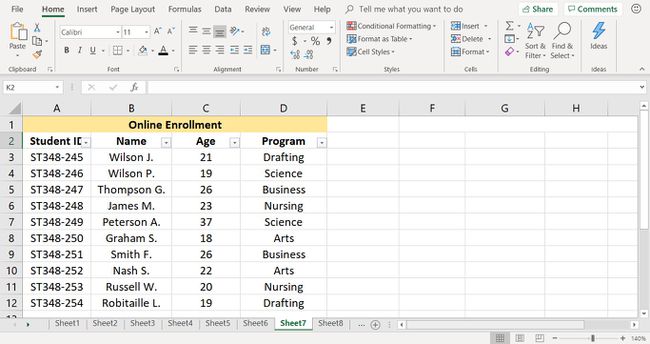5 Ways to Maximize Sheets in Excel 2007

Managing spreadsheets in Microsoft Excel 2007 can greatly enhance your productivity at work or for personal use. With its array of features, Excel 2007 allows users to handle complex data sets, perform detailed analysis, and create impressive charts and tables. Here are five detailed strategies to maximize the use of sheets in Excel 2007, helping you to work smarter not harder.
Navigating and Organizing Sheets

When dealing with multiple sheets, organization is key. Here are some methods to manage sheets effectively:
- Color Coding Sheets: Use colors to quickly identify different categories or projects by right-clicking the sheet tab, selecting Tab Color, and choosing a color.
- Rename Sheets: Instead of relying on default names like “Sheet1,” rename your sheets with meaningful titles. This makes navigation intuitive.
- Sheet Order: Keep related sheets together by dragging and dropping them into a logical sequence.
Advanced Formula Usage

Excel 2007 supports robust formula functionality:
- Array Formulas: These are used for multiple calculations at once. Press
Ctrl + Shift + Enterafter entering an array formula to lock it in place. - IF, VLOOKUP, and HLOOKUP: Utilize conditional logic and data retrieval with these functions for more dynamic spreadsheets.
- Pivot Tables: Create them to summarize, sort, and reorganize data. Go to Insert > Pivot Table to get started.
✨ Note: Ensure to manage your source data correctly when creating pivot tables for best results.
Data Validation for Consistency

Maintaining data integrity is crucial for accurate analysis:
- Data Validation Rules: Set up validation rules to ensure that only appropriate data is entered. Navigate to Data > Validation to create custom rules.
- Drop-down Lists: Use Data Validation to create lists, limiting user inputs to predefined options, reducing errors.
- Error Messages: Customize error messages to guide users on what data is expected.
✨ Note: Consistency in data entry helps with data analysis, making your work more reliable.
Dynamic Charts and Graphs

Visual data representation can significantly enhance presentations and reports:
- Linked Charts: Create charts that automatically update as data changes. Insert a chart and link it to your data range.
- Chart Filtering: Use the filter feature in chart elements to display only the data relevant to your analysis.
- Secondary Axis: Add another y-axis when comparing data sets with different scales.
Macro Automation

Automating repetitive tasks can save hours:
- Record Macros: Use the macro recorder to automate tasks like formatting or data entry. Go to Developer > Record Macro.
- Edit Macros: Refine your macros in VBA to customize or streamline actions further.
- Run Macros: Assign macros to buttons or shortcuts for instant access. Select Developer > Macros to run or edit.
Summing up, Excel 2007 offers tools that, when used correctly, can revolutionize your data handling and productivity. By organizing sheets, utilizing advanced formulas, enforcing data validation, creating dynamic charts, and automating tasks with macros, you can work with a higher level of efficiency and accuracy. Remember, practice is key to mastering Excel's capabilities, and staying updated with new features or techniques will keep you at the forefront of spreadsheet mastery.
Can I change the color of sheet tabs?

+
Yes, you can change the color of sheet tabs in Excel 2007 by right-clicking on the tab, selecting “Tab Color,” and choosing a color.
What’s the benefit of using Array Formulas?

+
Array formulas allow you to perform multiple calculations at once, making your data processing tasks more efficient.
How do I automate tasks in Excel 2007?

+
You can automate tasks using macros. Start by recording a macro via Developer > Record Macro, then edit it in VBA for further customization.
Can I validate data entries in Excel?

+
Yes, go to Data > Validation to set up rules for data entry, ensuring only appropriate data is entered.
How can I make my charts dynamic?

+
Link your chart data ranges to cells that automatically update when new data is added, allowing your charts to be dynamic.



